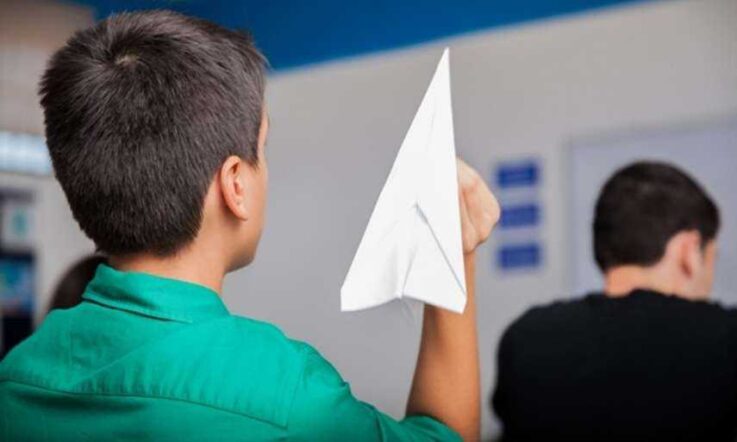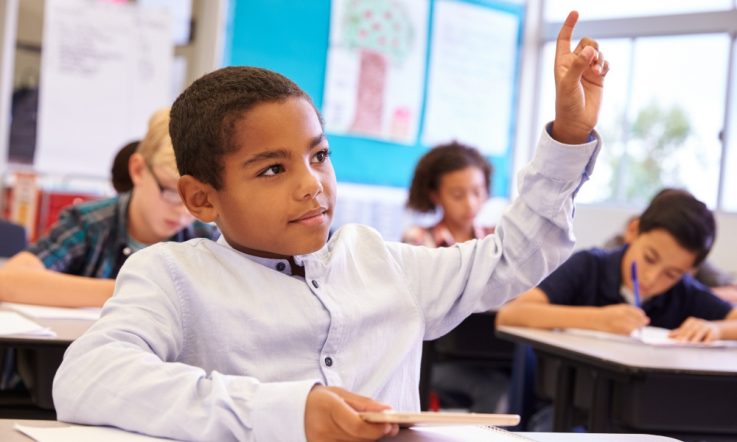In the first of this series on classroom discipline, I addressed how a teacher enables a calm, focused beginning to a lesson with a restless class. In this article the theme of a discipline plan is continued as the teacher moves into ‘on-task’ learning time.
Before the teacher directs the students to the ‘on-task’ phase of the lesson she reminds them of the core routines for this phase of classroom learning time: appropriate ‘noise level’ (using ‘partner-voices’); appropriate movement around the classroom, and how to get teacher support without calling out. She also has spare pens, rulers, pencils, paper for the students who are lazy, forgetful or emergent ‘task avoiders’. These are basic but crucial routines that will enable a more purposeful and cooperative learning climate.
She is aware that the transition between whole-class teaching and on-task learning time sees a natural rise in noise levels, kinaesthetic restlessness, and, in some students, time off-task (task avoidance).
She is focused on task clarity (particularly for visual learners) and behaviour clarity (in the routines above) by a positive reminder about the fair routines (above).
She – then – moves around the room to enable focus and refocus, to engage, micro-teach, clarify and give feedback to her students.
She notices a couple of boys wandering. She walks over quietly, and says, ‘Ahmed. Hello.’
He frowns.
She begins with a brief descriptive cue. ‘You’re wandering around. What do you need to be doing now?’
When she uses a question she uses a direct question (positively, respectfully) to raise the student’s awareness and responsibility. She doesn’t ask him why he is wandering.
He says he’s getting a pen from his mate.
She reminds him of the pens, pencils, rulers and paper box on her table. She then says, ‘When you’re back in your seat I’ll come and give you a hand.’
‘When’ is an expectational cue to task focus. She then walks away, giving him take-up-time, again conveying her expectation of cooperation.
She also notices out of the corner of her eye Maddie and Taylor surreptitiously texting on their smartphones. She walks over and greets them, ‘Hi, how’s it going?’
They frown, their eye contact is skewed.
She doesn’t immediately address the phones, instead she focuses on the task and chats about the work with them. She – then – gives a rule reminder and directed choice.
‘The school rule is clear ... phones off and away or you can leave them on my table until break time.’
Maddie argues (sulkily) ‘...wasn’t even using it!’
She partially agrees. ‘Even if you weren’t...’ She then repeats the directed choice and walks away with a task reminder, ‘I’ll pop back to see how you’re going later.’
She gives them take-up-time, and hears the overdrawn sigh behind her back. She tactically ignores this.
The primary issue/behaviour here is phones in class time. When students sigh, roll their eyes, pout, sulk, mutter, or whinge she will often tactically ignore these ‘secondary behaviours’ (Rogers, 2011). She doesn’t easily reinforce such attention behaviour. When students prevaricate or argue, she will either firmly ‘block’ their protestations and refocus to the fair rule or expected behaviour.
On occasion (as with the phone) she will briefly – partially – agree. This is demonstrated when she says ‘...even if you weren’t [using the phone]’. This refocuses to the rule or directed choice. Her tone is pleasant, respectful, yet decisive.
If after reasonable take-up-time they do not put the phone away she will make the immediate or deferred consequences clear. ‘Maddie... Taylor... I’ve asked you to put the phones off or away. If you choose not to I’ll have to follow-up with you in your own time.’ This is a deferred consequence.
Where there is clear disrespect in any of her students, she will address such behaviour briefly, firmly, assertively. ‘I don’t speak disrespectfully to you – I don’t expect you to speak disrespectfully to me.’ She will then refocus to the expected behaviour. If she has clarified the consequence she will then leave the consequential-ball-in-their-court, as it were.
She has a plan.
Her plan is conscious of several key features of behaviour leadership:
- Her aim in all behaviour leadership (particularly discipline) is to enable students to be aware of their behaviour as it affects the rights of others (including the teacher) and to ‘own their behaviour’. Every discipline transaction, however brief, is her conscious attempt to enable these aims;
- A focus on least intrusive (intervention) where possible, moving to more intrusive (intervention) as situation or the circumstance necessitates;
- Using positive corrective language wherever possible;
- Focusing on the ‘primary behaviour’ wherever possible/appropriate and avoiding over-servicing ‘secondary behaviours’;
- Using take-up-time and tactically ignoring thoughtfully. All this is not mere ‘technique’ or ‘formulaic’; she is consciously seeking to be respectful and positive within her discipline plan;
- She will always follow-up one-to-one with students who are more persistently disruptive. She does this after class or via an appointment time with the student;
- This framework plan shapes how she leads. This is balanced by the core routines and the positively stated rules. All this enables a positive approach to behaviour leadership, a respectfully positive relationship with her students and – crucially – a positive, workable, teaching and learning environment.
References
Rogers, B. (2011). You know the fair rule: strategies for positive and effective behaviour management and discipline in schools. (3rd edition) Aust Council for Educational Research: Melbourne.
- In the first part of this series, Dr Rogers discussed how to enable a calm, focused beginning to a lesson with a restless class: Calm the classroom storm.
- The final part of this series on behaviour management explores How to follow up with disruptive students beyond class time.
Which strategies do you use to transition between whole-class teaching and on-task learning time?
Do you have a behaviour plan in place to deal with unexpected issues?



